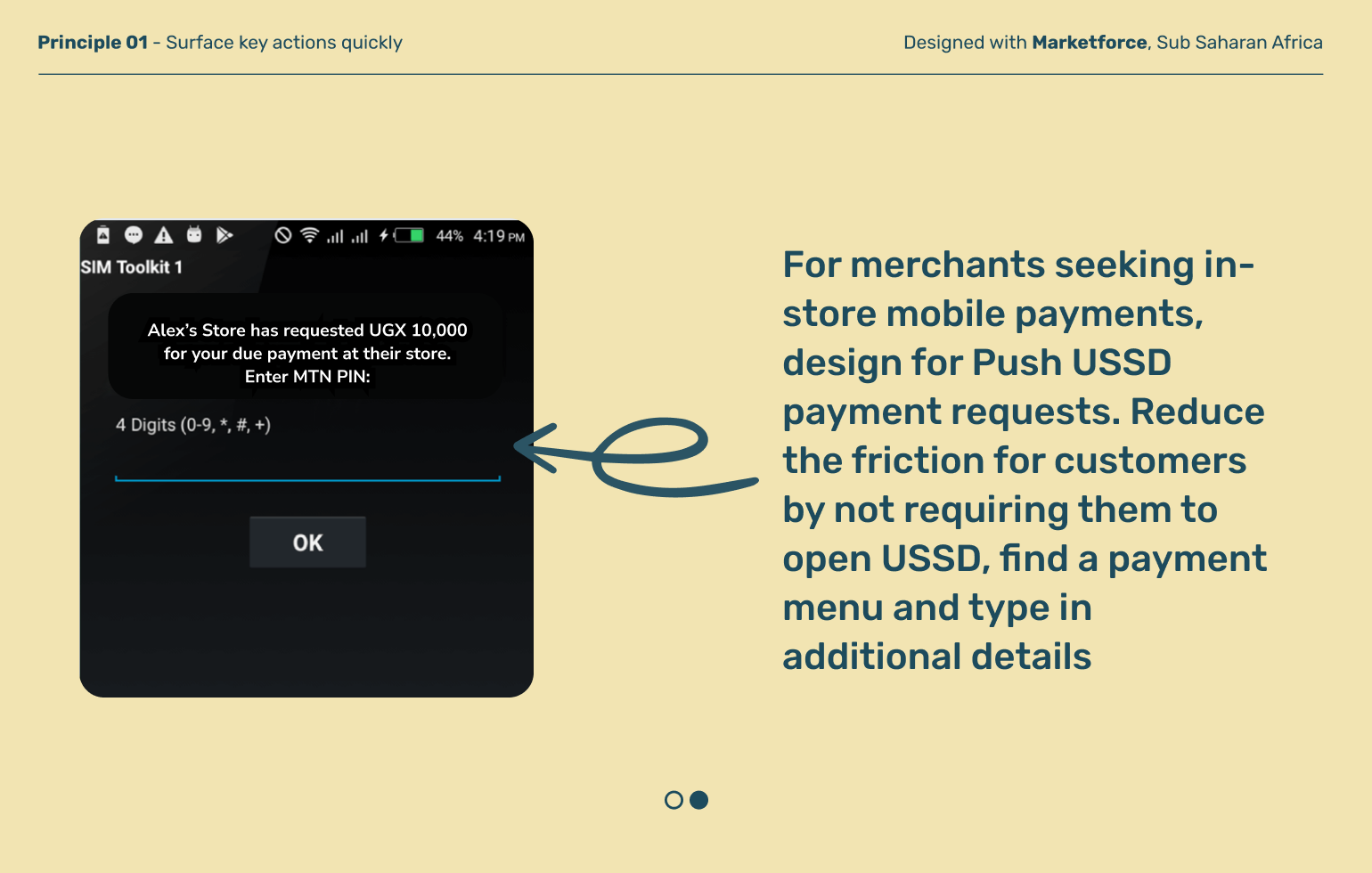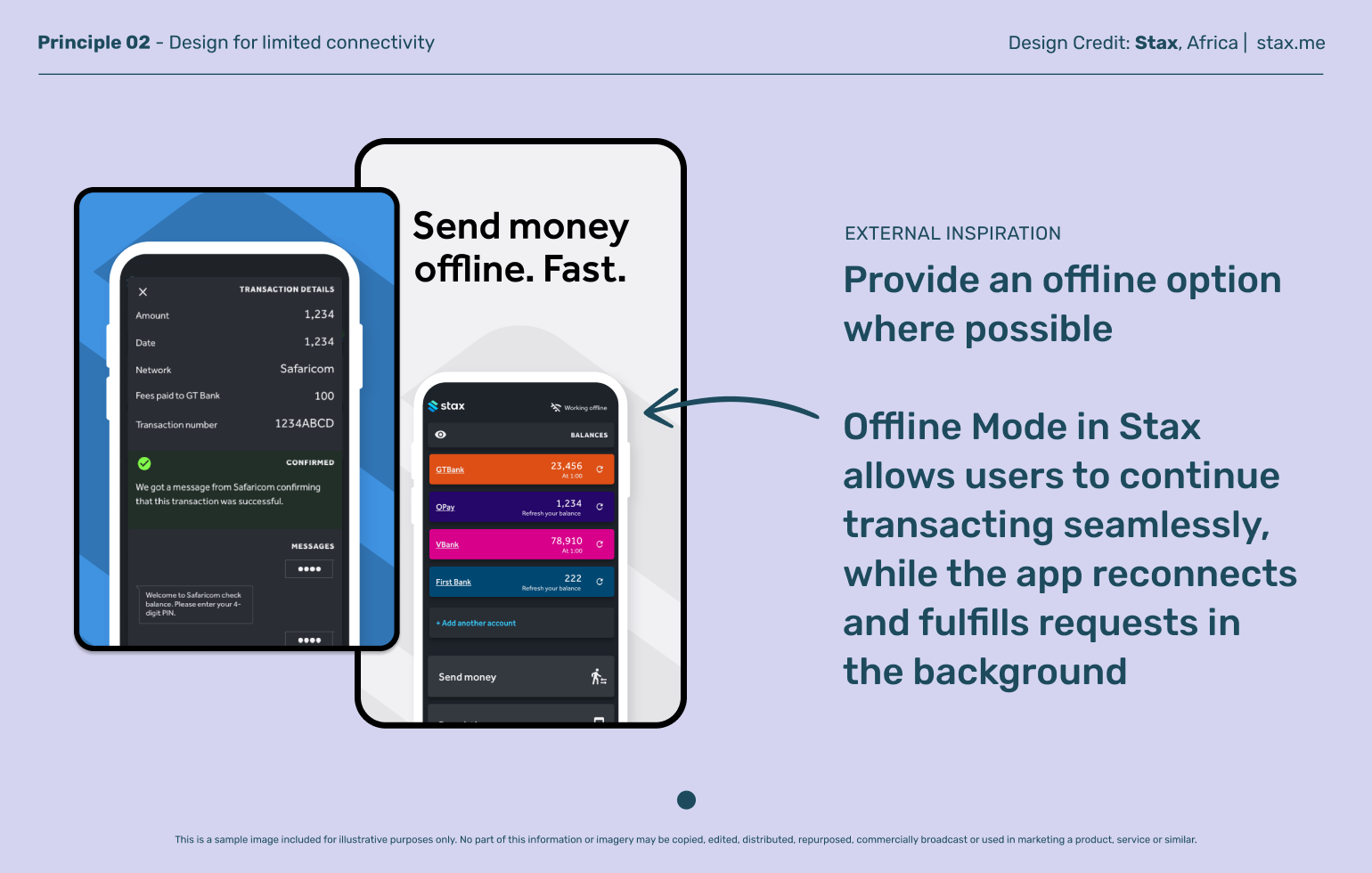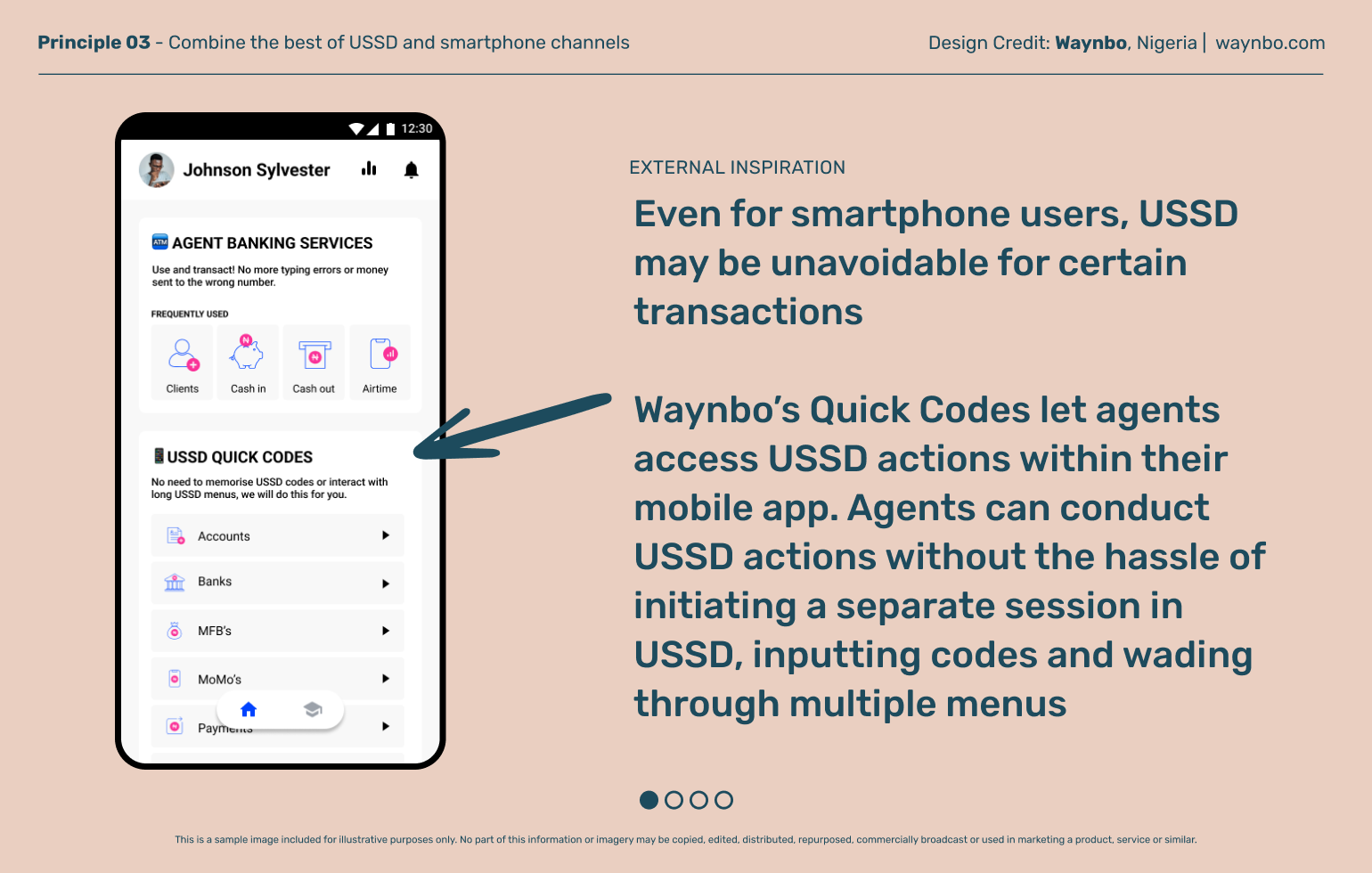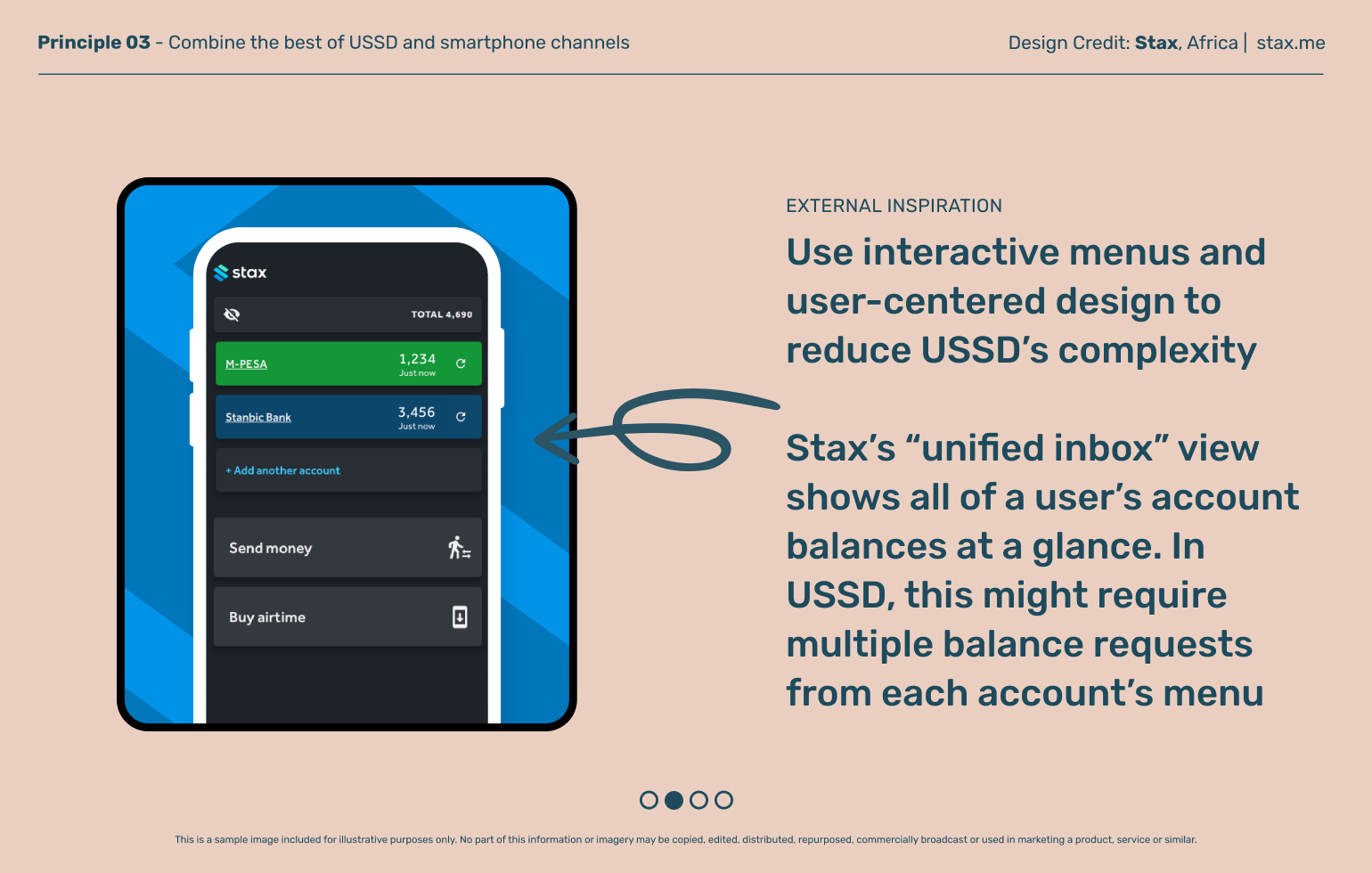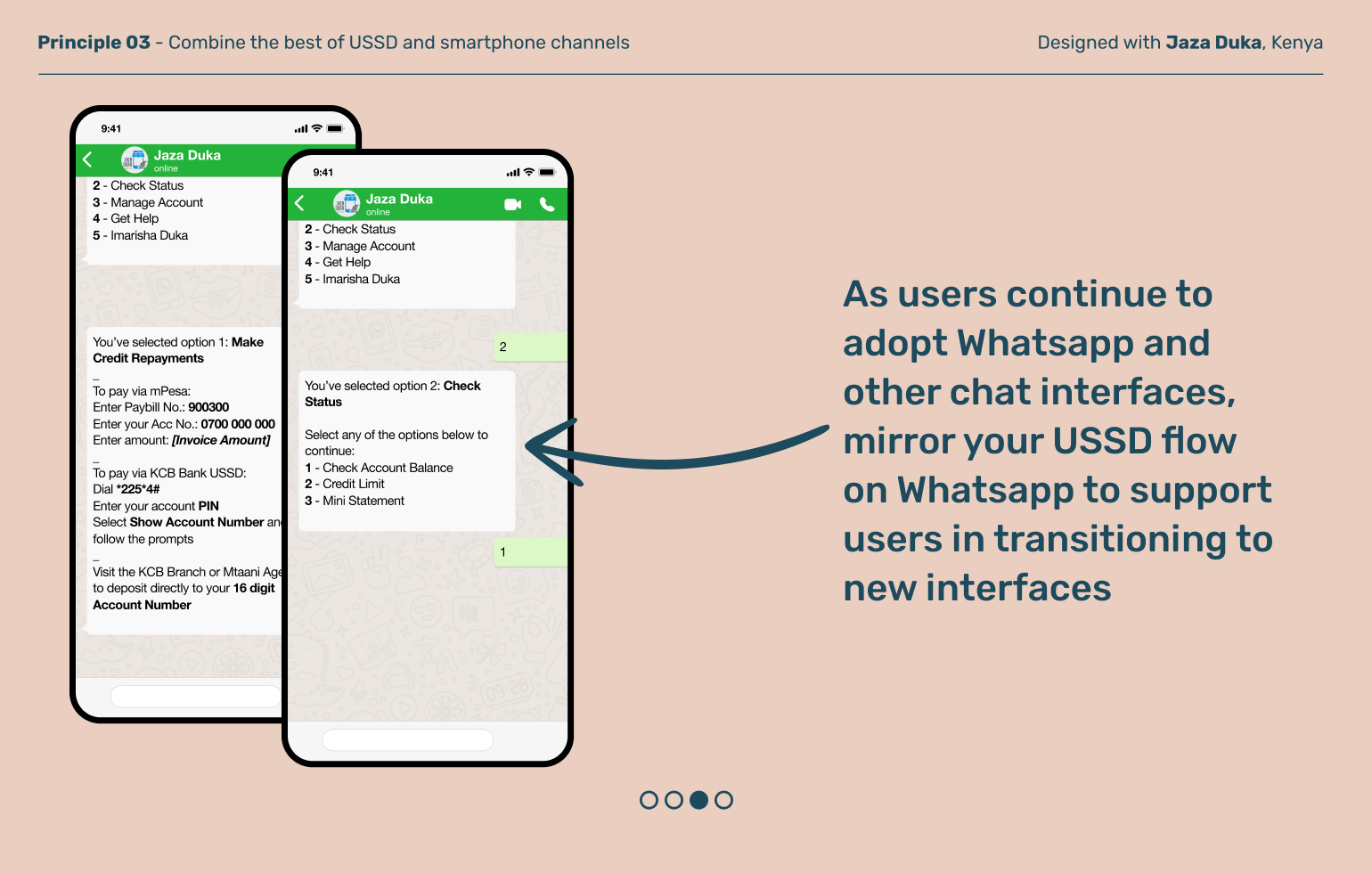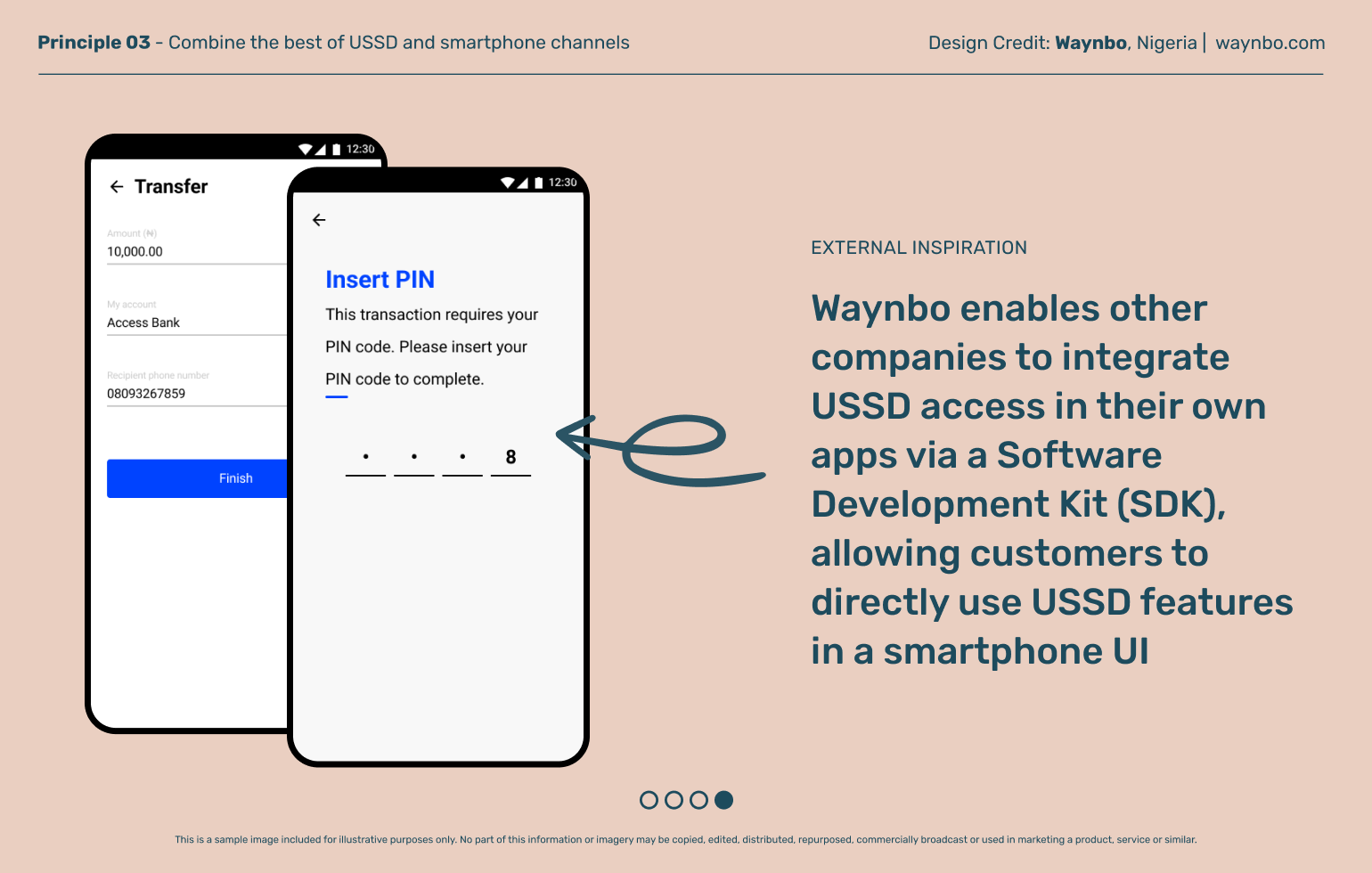USSD
& SMS
Design better experiences within the text menu and on top of the Unstructured Supplementary Service Data (USSD) channel, an over-the-air menu-driven interface commonly used among people living in the last mile
Principles at a glance
-
01
Surface key actions quickly
↓
-
02
Design for limited connectivity
↓
-
03
Combine the best of USSD and smartphone channels
↓
Principles in action
Surface key actions quickly
Principle 01
For many people who rely on USSD, the interface can be slow, error-prone, and unreliable. That’s especially true for complex or multi-step transactions. Make your USSD flows more seamless for users by simplifying the number of steps to reach common actions and offering shortcuts to access complex functions.
Principle 02
Design for limited connectivity
Even momentary lapses in connection can cause mobile apps to grind to a halt or USSD sessions to drop. If this happens during a transaction, it can force users to start over or leave them wondering if their money was lost. Give your users an option to interact offline especially where connectivity infrastructure is less reliable.
Principle 03
Combine the best of USSD and smartphone channels
Combining smartphone and chat interfaces with core USSD functions can benefit users who lack access or have low digital and financial confidence.
A new wave of smartphone apps now ride on top of USSD rails, not only providing free access to mobile services but also smoothing over the worst bumps and pitfalls of the USSD interface.
Explore other moments in Conversational & Text Interfaces



